Network forensics framework allows security teams in enterprises to capture, record and analyze raw network traffic go back in time and retrace the steps taken by a cybercriminal to breach the network environment. It aids in identifying unauthorised access within networks and searches for evidence in case of any security incident.
The market for network traffic is on the rise as the number of cyberattacks has increased. Enterprises are investing more and more into uplifting their network security posture. According to estimates, the market space will reach $7.30 billion riding on a compound annual growth rate of 16.85 percent.
However, the modern network forensic framework has certain challenges to deal with. An analysis of them revealed that the primary challenge is high-speed data transmission as the framework cannot capture and record all packets flowing through the network due to high speed.
To capture all data, enterprises put in place a distributive network forensics framework but even then all network traffic can’t be captured resulting in the procurement of incomplete logs and information. Hence, reconstructing the cyberattack incident becomes a difficult task and identifying its origin becomes tougher.
Secondly, retrieving the relevant information for conducting forensics becomes a difficult task owing to large amounts of data. The amount of data captured and stored in the network environment is tremendous. Sorting out information that can be evidence to reconstruct the incident is like finding a needle in a haystack.
Data integrity is another challenge found in the framework. Data integrity means that the network must have the most consistent, complete, and accurate data. Maintaining it is difficult due to a variety of characteristics such as data velocity, size, and scope. When the data and data system’s trust and integrity are compromised, network problems increase. Frequent data mobility, system malfunctioning, malware attacks, software faults, and hardware errors are all possible reasons for low integrity. When data loses its integrity as a result of purposeful and intentional attempts, the network forensic procedure suffers.
Another problem of the framework is data privacy which holds a pivotal position within the boundaries of network forensics. Decrypting large amounts of data packets is a tedious task for the security team.
The intrinsic anonymity of IP addresses is another issue in the network forensics framework. Each network layer employs some type of addressing, such as MAC addresses, IP addresses, and e-mail addresses, all of which can be faked. This hinders security teams from identifying the attacker.
The goal of the network forensic framework is to determine the source of the attack, the reliability and integrity of the evidence, visualisation of attack paths, and determining the worst attack paths, all of which can be accomplished when investigators have a clear understanding of the network infrastructure and attack behaviour thanks to the use of appropriate network forensic tools and extensive network forensic knowledge.
Mitigating the challenges is critical for recognising, capturing, recording, and analysing the evidence on distributed networks; as a result, they must be scalable as network infrastructure grows in order to analyse fast-moving and large volumes of network packets collected at diverse points throughout the network.









